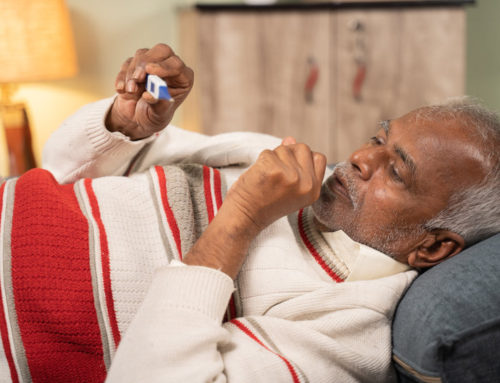Share This Story!
What Are Pressure Injuries?
Aches and pains happen after sitting or laying down for long periods. That’s because a surface is applying constant pressure to that sore body part. Therefore, the longer someone stays immobile, the more pain becomes an injury. This is the underlying concept of pressure injuries. Pressure injuries are also called bedsores, pressure ulcers, and pressure sores. Pressure injuries get progressively worse and need immediate attention to avoid complications.
Who gets pressure injuries?
Constant pressure from laying in bed for long periods is the primary cause of the condition. People that are bedridden, hospitalized, or use wheelchairs tend to get bedsores. Friction and shear movement can worsen the symptoms. Older adults have thinner skin and are particularly at risk. Parts of the body with protruding bones like the head, elbows, knees, ankles, and hips get pressure injuries. There are 4 stages of pressure injuries, with the later stages needing surgery.
Stage 1
Stage one is the most common form of pressure injury. These sores appear on the epidermal layer. The affected skin is red and tender but stays intact. The skin can look purple, bluish, or shiny for those with darker skin tones. Stage 1 pressure injuries may be painful, firm, itchy, and different from the nearby skin.
Treating stage 1 injuries
To treat stage 1 injuries, remove the pressure and clean the area with warm water. Keep the site dry as much as possible and use a warm compress. A healthy diet helps with wound healing. Focus on protein, vitamin A, vitamin D, and zinc. Improve range of motion and change resting positions as much as possible. Monitoring these injuries is vital as there is a risk of infection or progressing to stage 2 injuries.
Stage 2 injuries
At stage 2, the epidermis skin layer breaks and wears away, forming a sore or ulcer. The ulcer looks like a scrape, blister, or rug burn and can even expose the deeper dermis. Stage 2 ulcers are painful, red, and sometimes filled with a clear liquid. These ulcers need immediate treatment since some of the skin may die. A wound care specialist or doctor will clean and dress the wound to prevent infection. These wounds can heal with time, treatment, and the same treatment options as stage 1 injuries.
Severe stage 3 injuries
These injuries are much worse as the epidermis and dermis layers wear away. Tissue damage can form along with pus, swelling, and some redness. Finally, the edges of the pressure injury may turn black, signaling tissue death. This stage needs immediate, long-term treatment from a wound care facility. Besides removing the dead tissue, antibiotics, dressing, and other wound care are essential. If available, some centers will recommend hyperbaric oxygen therapy (HBOT) if the sores are not healing.
The dangerous stage 4
Stage 4 pressure injuries are rare but the most dangerous of all. People who are immobile for extended periods without proper care are at risk. These sores are much bigger and more profound, affecting a large part of the body. Stage 4 sores damage more tissue, muscle, and ligaments. These sores often lead to infections and need surgery to remove large swaths of diseased tissue. In severe cases, infected sores can lead to amputations.
Early detection is vital.
Pressure injuries can progress if left untreated. Stages 3 and 4 are particularly concerning and need immediate medical attention. These are signs of long-term immobility, excessive bed rest, or poor general care. The goal is to identify these sores early and receive medical treatment. A healthy diet, gentle movement, and hydration can help with healing at all stages.





